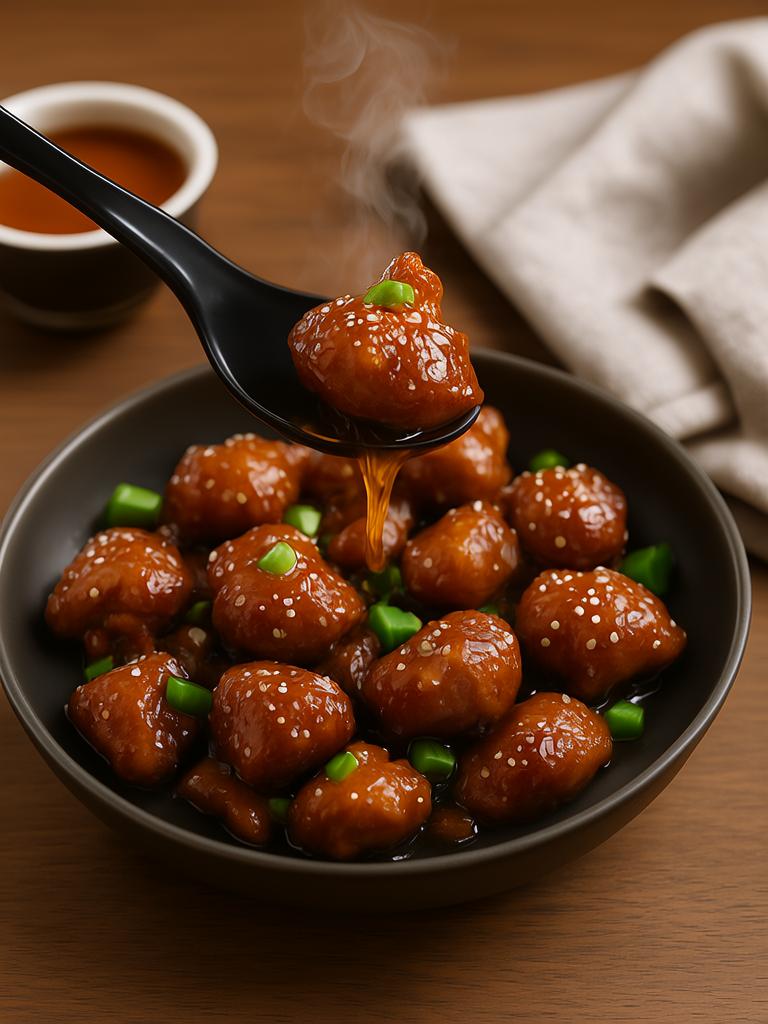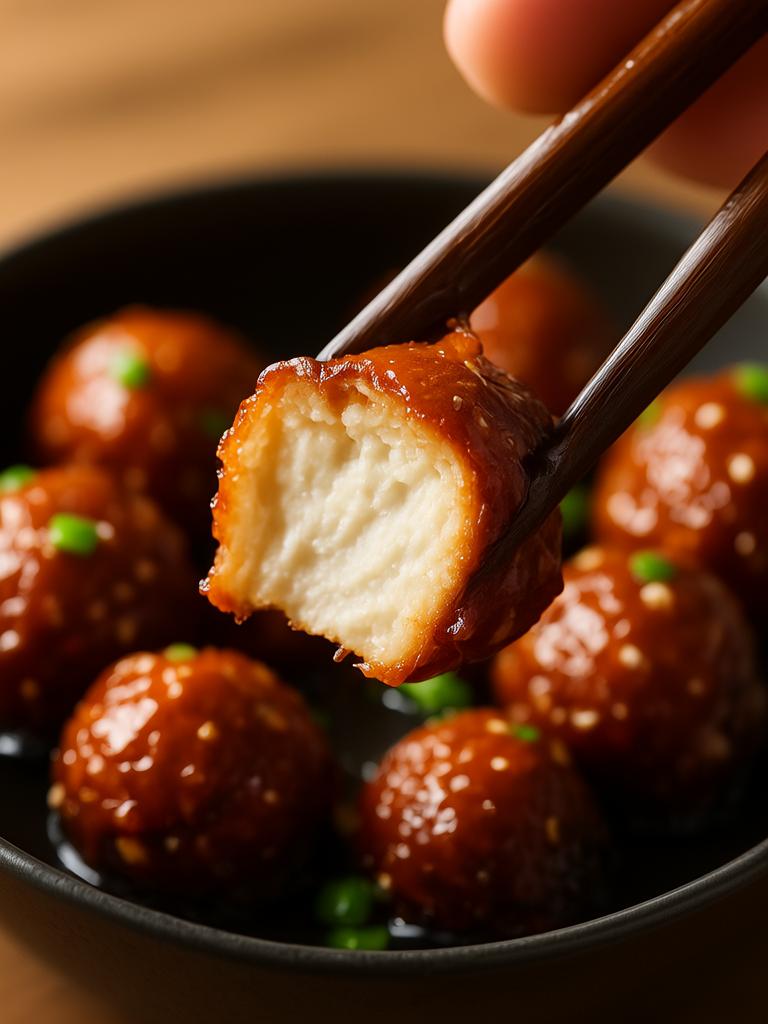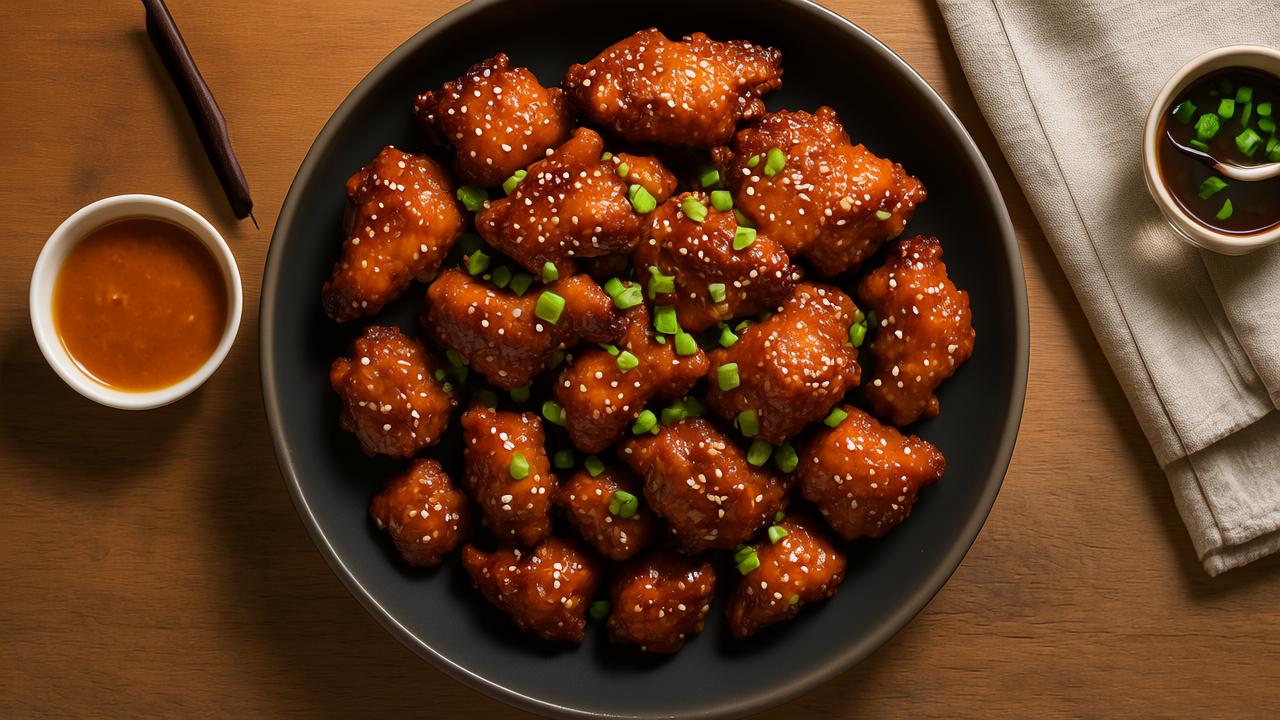Ever taken a bite of honey garlic chicken so crispy, so sticky-sweet, it shuts up the whole table? You know the one — loud crunch, then that immediate rush of garlicky nectar. It’s a dish that doesn’t just taste good. It feels right. You taste the crunch before it even hits your teeth.
This isn’t just takeout Tuesday fodder. For professional cooks and advanced home chefs, crispy Chinese honey garlic chicken is a case study in balance — texture vs. tenderness, sweetness vs. sharp heat, and East meets West technique. It’s indulgent, but not dumb. It’s fast-casual, but full of finesse. And if done right, it becomes a lesson in frying mechanics, sauce engineering, and temperature control.
Let’s rip into it.
What Makes It Crispy?
Let’s not dance around it. The crunch is the hook.
The outer coating of honey garlic chicken is more than just flour slapped on meat. It’s deliberate. Crispness comes from a dry starch base, not a wet batter. A slurry or a dredge? No, thanks. Here we want potato starch or cornstarch — sometimes both — patted onto dry, marinated chicken until it looks dusty. And yes, the marination must be dry too. Think: soy, Shaoxing wine, garlic, white pepper — not buttermilk or milk.
Why? Because moisture is the enemy of crisp.
A 2019 Journal of Food Science study noted that cornstarch yields a lighter, crispier crust than wheat flour, due to its lower moisture absorption and higher amylose content. That means when it hits the oil, it bubbles harder, dries faster, and forms those jagged golden ridges you can hear from the next room.
Wanna crank it up? Use double fry technique. Fry at 325°F to cook through, then again at 375°F for that loud, shattering crunch. That second fry is your crunch insurance. It hardens the crust, drives off excess oil, and resets the texture if it’s gone soggy during rest.
Professional kitchens know this — Korean fried chicken joints? Masters of the double fry. Chinese honey garlic chicken follows suit.
That Sauce Though: Sticky, Sweet, Savory Chaos
Here’s where amateur chefs go wrong: they drown the chicken in sauce. You want glaze, not gravy. A thin, tacky coat that clings like caramel. Not a pool.
The honey garlic sauce has three key players:
– Honey (obviously)
– Fresh minced garlic (not jarred, never dry)
– Soy sauce (light, for salt and umami)
Now, add rice vinegar for tang. Just a bit — ½ teaspoon too much and it tastes like salad dressing. Sesame oil comes in at the end, not during the boil, or it’ll go bitter. Chili flakes? Optional, but man, what a flex.
The sauce thickens not with cornstarch but through reduction. Let it bubble on medium-low, not high. High heat can burn the garlic and honey, turning it from sticky to bitter tar. Reduce it slow until it drips in threads off a spoon. Almost syrupy.
Tip from restaurant kitchens: Once sauce hits desired viscosity, take it off heat and toss the chicken immediately. The crust drinks it in while staying crisp — for about 7 minutes. That’s your serving window before sog sets in.

What Chicken To Use (Don’t Skip This)
You might think breast is the leaner, smarter choice. Wrong move.
Professional chefs prefer boneless, skinless chicken thighs. Why? They’re forgiving. Juicier. They handle the double fry like champs and don’t dry out in the heat. They also offer better flavor. Chicken breast is too clean-tasting — it disappears under strong sauce.
Cut them into bite-sized pieces — not too small though. Smaller chunks cook too fast and become brittle. Around 1½ inches is the sweet spot. It gives you enough interior for moisture, enough surface area for crisp.
Bonus trick? Marinate with a tiny bit of baking soda (1/8 tsp per pound). It tenderizes the protein slightly without making it rubbery — a technique borrowed from Chinese velveting.
Advanced Marination: Beyond the Basics
Here’s a pro secret: the marination is where you win the flavor war. Basic marinade is fine, but we can level up.
Try adding:
– A splash of Shaoxing wine (for depth and slight acidity)
– A pinch of white pepper (more aromatic than black)
– Grated ginger (fresh only, never ground)
– A whisper of oyster sauce (for a subtle bottom note of brine)
Let this sit for 30 mins to 1 hour. Any more and it starts breaking down the meat. Don’t skip this step — the meat’s internal flavor matters, especially since you’re not soaking the final product in sauce.
Oil, Heat, and the Physics of the Fry
Let’s talk oil. Don’t use olive oil. Don’t even use butter blends. You want something neutral with a high smoke point. Peanut oil is king, canola will do. Grapeseed if you’re fancy.
Oil temp matters more than you think. Too low and the chicken absorbs oil. Too high and the coating burns before the inside cooks. Use a thermometer. No, seriously. Guessing by “sizzle” is a rookie move.
First fry: 325°F. Cook 4-5 minutes until pale golden and bubbling slows.
Rest 5 minutes (on a rack, not paper towels — they steam the crust).
Second fry: 375°F. Go for 90 seconds or so until deep golden and loud.
Pro tip: Fry in small batches. Dumping a whole pound of chicken into oil crashes the temp, and then you’ve got soggy nuggets. Nobody wants that.
Plating and Pairing Like a Pro
Now, how do you plate this thing?
Don’t just pile it up. Stack loosely in a shallow white dish, drizzle with a final trickle of sauce, then hit it with:
– Toasted sesame seeds
– Thin-sliced green onions
– Optional: crushed roasted peanuts for crunch
Serve with jasmine rice or plain steamed bao buns. If you’re really leveling up, pair with a shaved cucumber salad dressed in rice vinegar and sugar to offset the sweetness. Refreshes the palate between bites.
Drink pairing? Yes, please. Try a crisp, citrusy lager or a dry Riesling to cut the sticky sweetness. Oolong tea works too.

Common Mistakes That Kill The Dish
Let’s knock out a few classic rookie errors:
1. Saucing too early.
Chicken must be crispy and hot before tossing in glaze. Room-temp chicken soaks it up like a sponge and goes limp.
2. Overcooking the garlic.
Burnt garlic tastes acrid. Add it halfway through sauce reduction, not at the beginning.
3. Wet dredge.
Don’t use egg or milk. Moisture in the coating guarantees a soft crust.
4. Paper towel draining.
Traps steam, ruins crust. Use wire rack always.
5. Thick sauce.
If it looks like pancake syrup, you’ve gone too far. It should be thin but clingy.
Why It Works: Flavor Science Behind the Dish
Chinese honey garlic chicken sits at the intersection of umami, sweetness, and crunch. That combination lights up the palate because it triggers multiple taste receptors at once.
Garlic activates sulfur compounds that deepen flavor perception. Honey provides rapid dopamine release — sweetness is comforting, indulgent. The soy sauce and slight tang keep it from becoming cloying. It’s basically engineered to be addictive.
There’s also a texture play: crunch followed by juicy chew. That contrast increases eating speed (yes, there’s data on this — see “Crispy Texture’s Influence on Bite Rate,” 2021, Asian Food Science Journal). Fast eaters tend to consume more — ever wonder why fast food chains love fried chicken?
This dish plays on that. Hard.
Modern Twists and Trends
Restaurants are remixing honey garlic chicken for modern diners:
– Spicy Version: Add Gochujang or Thai chili paste for a cross-cultural burn.
– Air Fryer Honey Garlic Chicken: Works if you double dredge and lightly spritz with oil. Less crisp, but healthier.
– Honey Garlic Chicken Bao: Tucked in soft buns with pickled daikon.
– Vegan Alternative: Use crispy tofu cubes or cauliflower bites — same starch dredge, same sauce.
Trend alert: “Crispy Asian Sauced Chicken” is exploding on TikTok and YouTube shorts. Videos of the fry crackle or sauce drizzle are driving engagement — worth considering if you’re running a food biz or social channel.
Final Thoughts: Why It Deserves a Place in Your Repertoire
Crispy Chinese honey garlic chicken isn’t just comfort food. It’s technique food.
It teaches the importance of oil temp, starch science, sauce reduction, and flavor layering. It’s indulgent, sure — but behind the decadence is a series of deliberate, technical choices.
Chefs who can master this dish are usually great at others too. Why? Because they understand heat, texture, timing, and restraint.
Serve it to anyone — your customers, your friends, yourself — and you’ll watch them lean back and say nothing but damn. That’s when you know you got it right.
And remember: never sauce the whole batch. Keep some plain. Just in case.
FAQs
What’s the best starch for making crispy Chinese honey garlic chicken?
Cornstarch or potato starch — they create the crispiest crust without holding too much oil.
Can I use chicken breast instead of thighs?
You can, but thighs stay juicier and handle frying way better.
Why is my chicken not staying crispy after saucing?
It’s likely because the sauce is too heavy or the chicken cooled down before coating.
Do I need to double fry the chicken?
Yes — double frying gives that shatter-crisp texture that single fry can’t match.
Can I make this dish in an air fryer?
You can, but it won’t be as crispy; lightly oil the dredged chicken and don’t overcrowd.
What oil should I use for frying?
Peanut or canola oil — both are neutral and have a high smoke point.
How long should I marinate the chicken?
30 minutes to 1 hour is ideal — more than that and it may break down the meat too much.
Can I make the sauce ahead of time?
Yes, just reheat it gently to avoid thickening or burning the honey.
Why is my garlic turning bitter in the sauce?
You probably added it too early or cooked it on too high heat.
What can I serve with honey garlic chicken?
Steamed jasmine rice, bao buns, or a simple cucumber salad work great.
Can I freeze the fried chicken?
Yes, but reheat it in the oven or air fryer — never microwave if you want to keep it crisp.
How do I know when the oil is ready for frying?
Use a thermometer — aim for 325°F for the first fry, 375°F for the second.
What’s the difference between glazing and drenching the chicken?
Glazing gives a light, sticky coating; drenching drowns the crisp crust completely.
Is this dish gluten-free?
Not usually — but you can make it gluten-free using tamari and gluten-free starch.
Can I make it spicy?
Absolutely — toss in chili flakes, Gochujang, or Thai chili paste to crank up the heat.
Ask ChatGPT

Mariana is a passionate home cook who creates delicious, easy-to-follow recipes for busy people. From energizing breakfasts to satisfying dinners and indulgent desserts, her dishes are designed to fuel both your body and hustle.
When she’s not in the kitchen, she’s exploring new flavors and dreaming up her next recipe to share with the Foodie Hustle community.

